Sunroom kitchens blend the airy brightness of a sunroom with the functional warmth of a kitchen, creating a versatile space that maximizes natural light, encourages indoor–outdoor living, and offers a cozy hub for dining and socializing. From seamless transitions that blur the line between interior and exterior to strategic use of materials, color palettes, and greenery, there are countless ways to infuse personality and practicality into a sunroom kitchen. Whether you prefer a modern minimalist aesthetic or a rustic retreat, integrating thoughtful storage, multi-functional seating, and statement lighting can transform this hybrid space into your home’s most inviting spot.
1. Seamless Indoor–Outdoor Flow
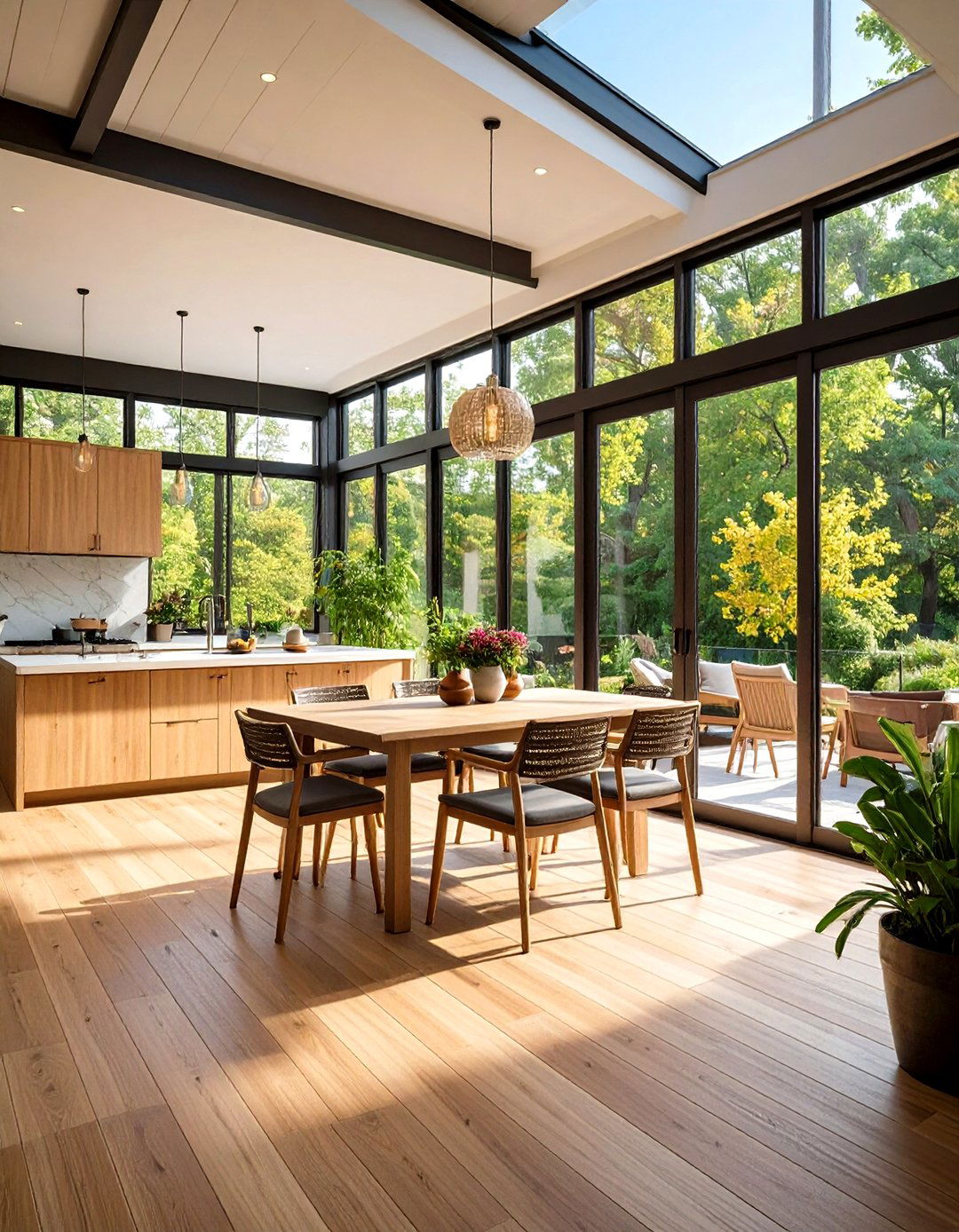
Designing a sunroom kitchen with large sliding or folding glass doors fosters an effortless transition between cooking and outdoor dining areas, perfect for summer entertaining and daily enjoyment. This approach not only enhances natural ventilation but also extends the visual boundary of your kitchen, making the space feel larger and more connected to nature. Choosing matching flooring materials—such as durable porcelain tiles or weather-resistant hardwood—both inside and out further unifies the two zones, ensuring a cohesive aesthetic and easy maintenance.
2. Maximized Natural Light
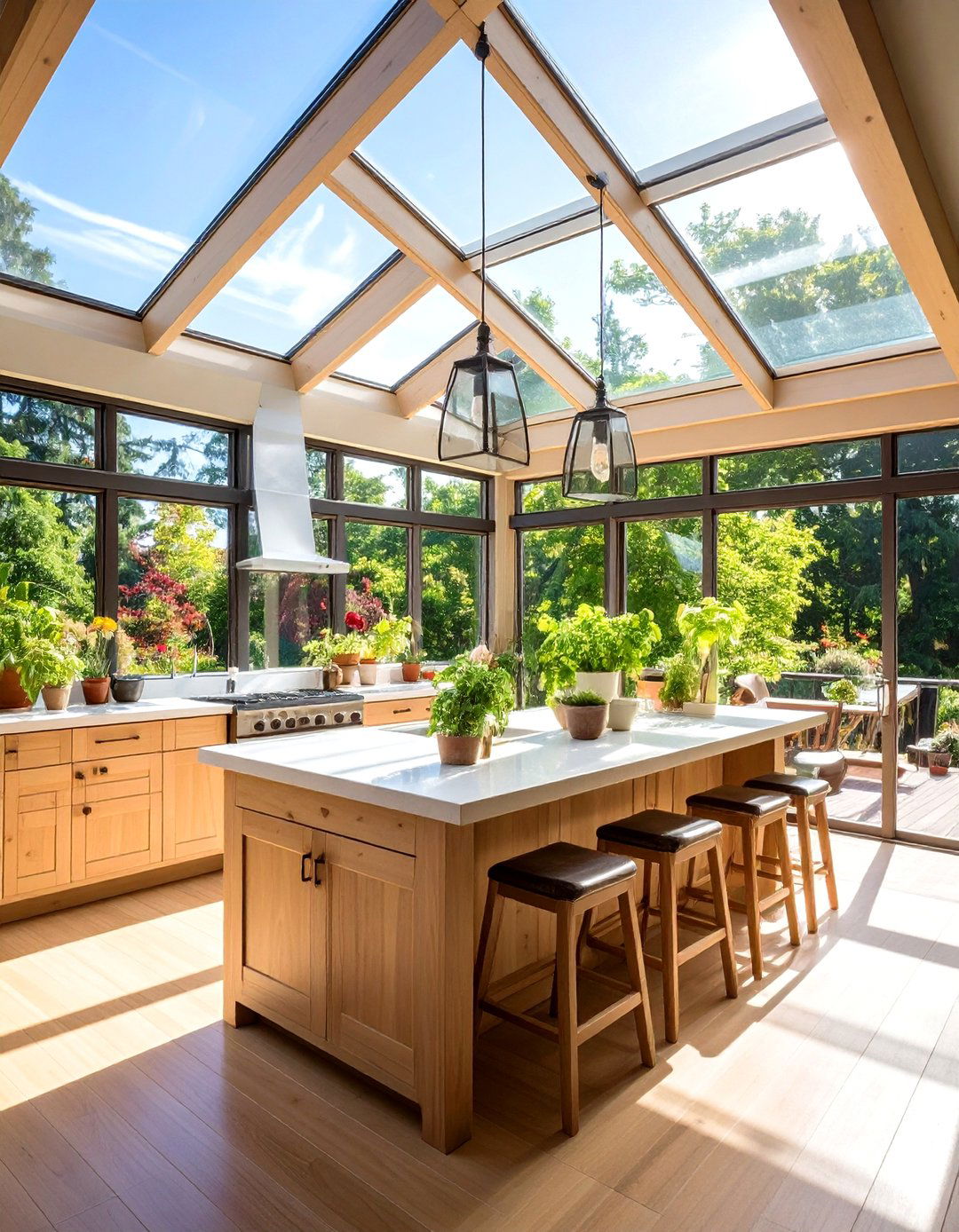
Sunroom kitchens thrive on abundant sunlight; optimizing window placement and incorporating skylights or translucent roof panels can flood the space with daylight. Strategic use of clerestory windows high on the walls allows for privacy while maintaining brightness, and north-facing glazing offers consistent, diffused light ideal for cooking and plant growth. To prevent glare and overheating, integrate adjustable solar shades or retractable screens that preserve views but regulate temperature.
3. Light-Reflecting Color Palettes
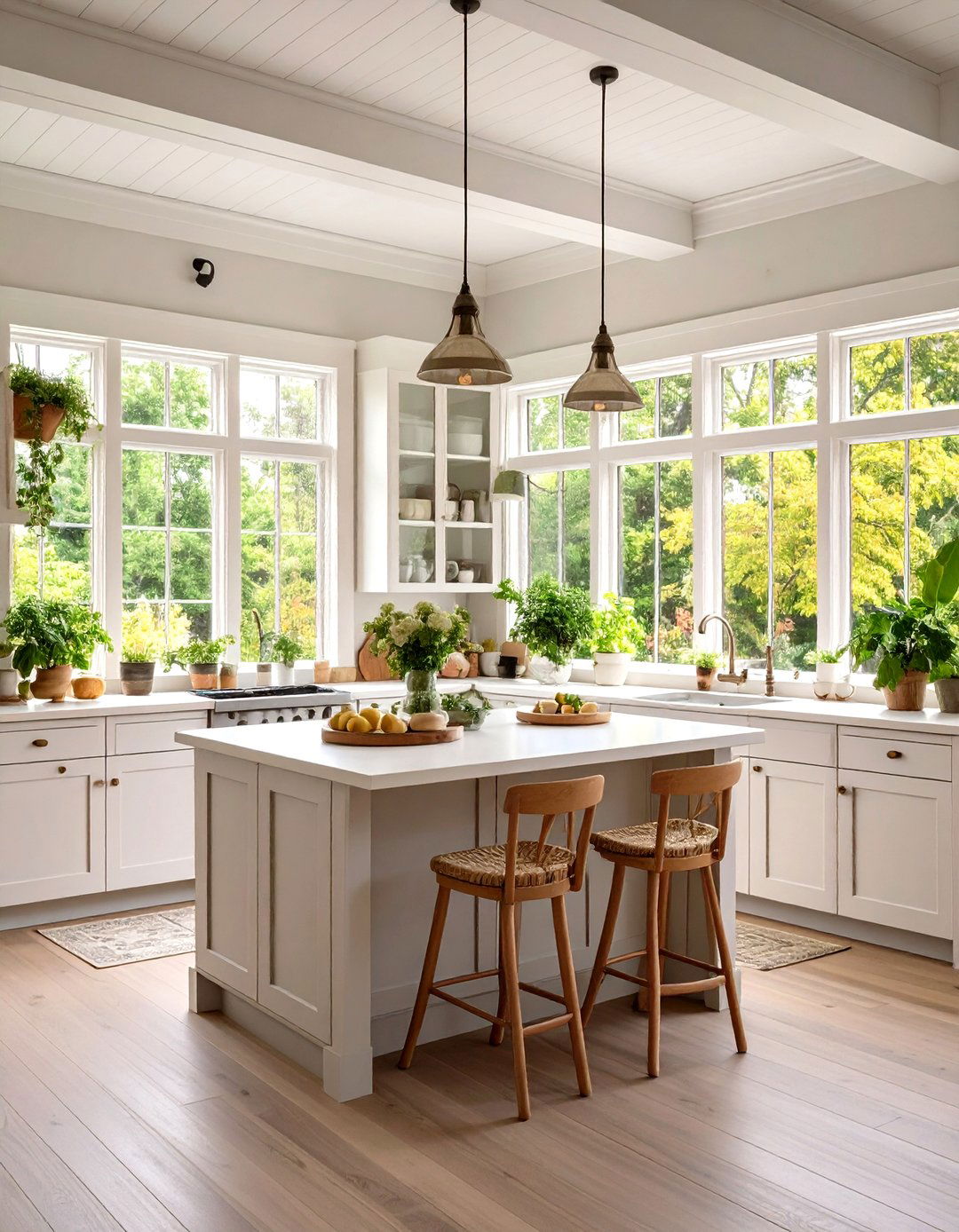
Employing a light, neutral palette in cabinetry, walls, and countertops amplifies the sense of airiness in a sunroom kitchen. Soft whites, pale grays, and muted pastels reflect sunlight to keep the space feeling fresh and expansive, while subtle accent colors—like mint green or sky blue—can echo the outdoor scenery. For a touch of warmth, consider natural wood finishes on lower cabinets or open shelving to ground the bright surroundings and add textural contrast.
4. Natural Materials and Textures
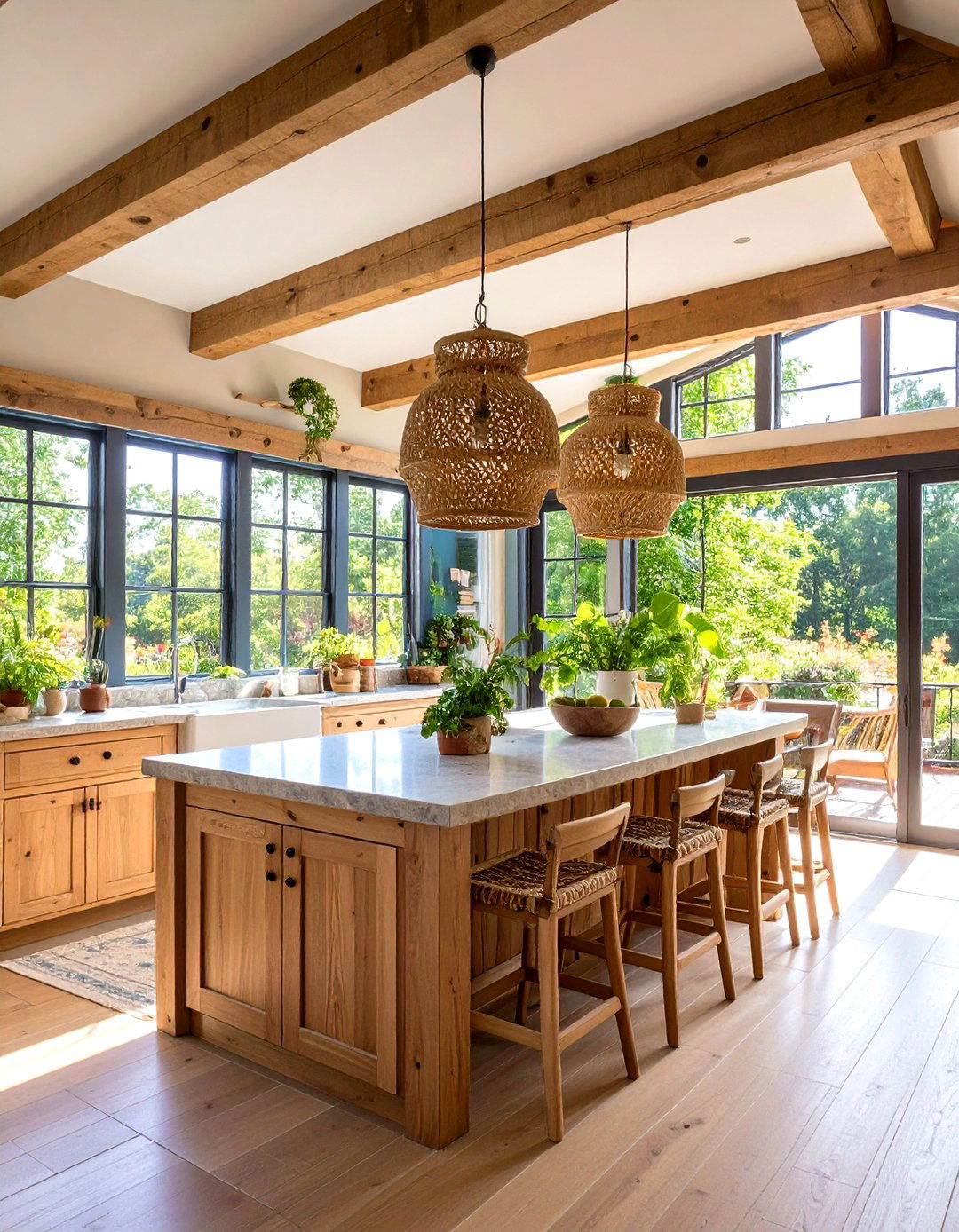
Incorporating natural materials—such as reclaimed wood beams, bamboo cabinetry, rattan light fixtures, or stone countertops—anchors the sunlit kitchen in organic warmth. Textured elements like a butcher-block island or a soapstone sink introduce a tactile dimension that complements the smooth glass and tile surfaces typical of sunroom designs. These materials also age gracefully, developing patina over time that enriches the space’s character.
5. Multi-Functional Island

A central island in your sunroom kitchen can serve as a prep station, casual dining spot, and entertaining hub all in one. Opt for an island with integrated storage—drawers for cookware, pull-out bins for recycling, or open shelves for cookbooks—to maximize functionality in a footprint-conscious layout. Adding barstools or a built-in bench wraps seating around the island, fostering conversation while meals are prepared.
6. Cozy Breakfast Nook
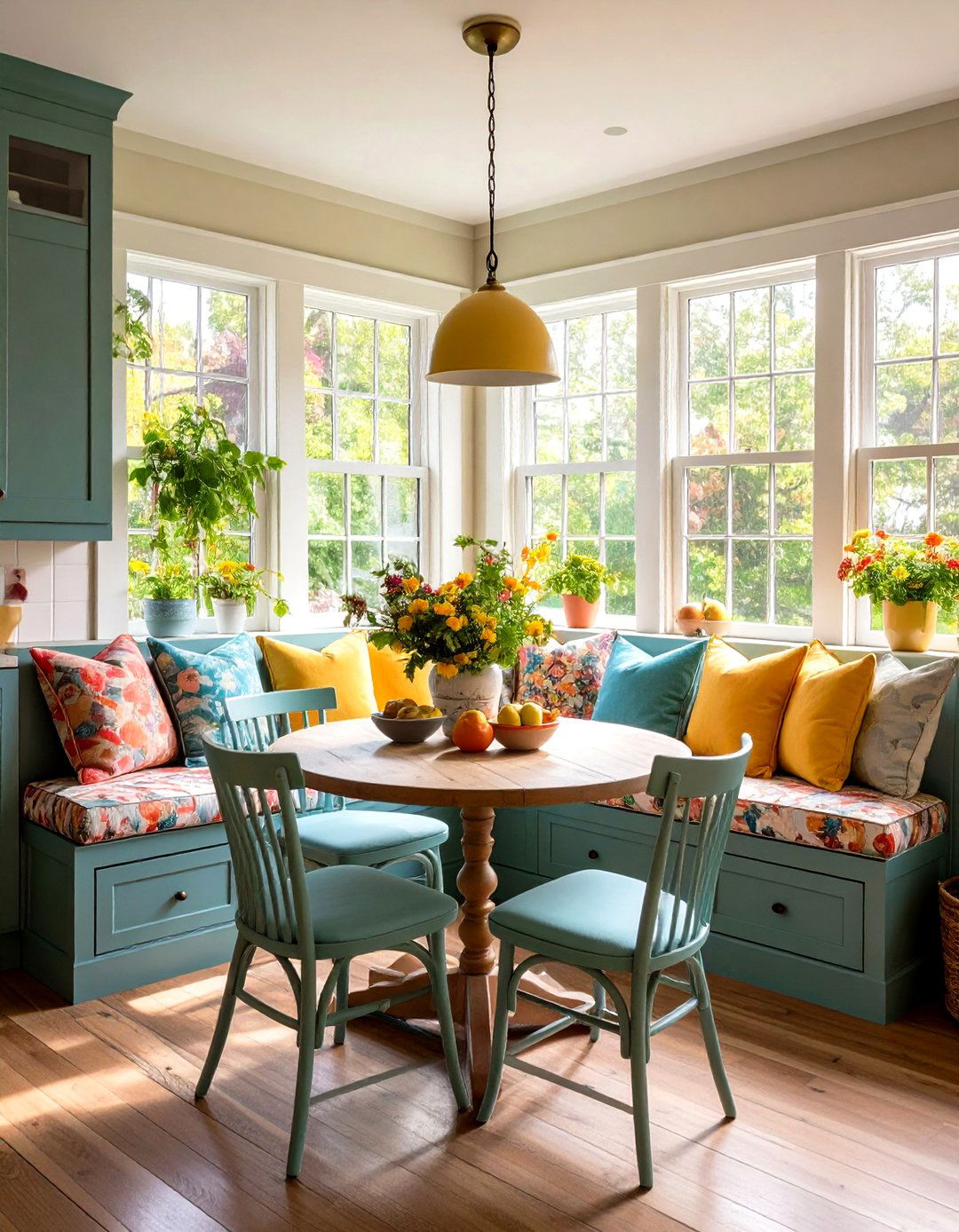
Transform a corner of your sunroom kitchen into a cozy breakfast nook by tucking in a built-in banquette upholstered in weather-resistant fabric. A round or oval table maintains an open flow and allows for easy passage, while cushions and throw pillows in vibrant patterns echo the outdoor view and add warmth. Pendant lights overhead create a defined dining zone and offer task lighting for early-morning coffee rituals.
7. Greenery and Indoor Gardens
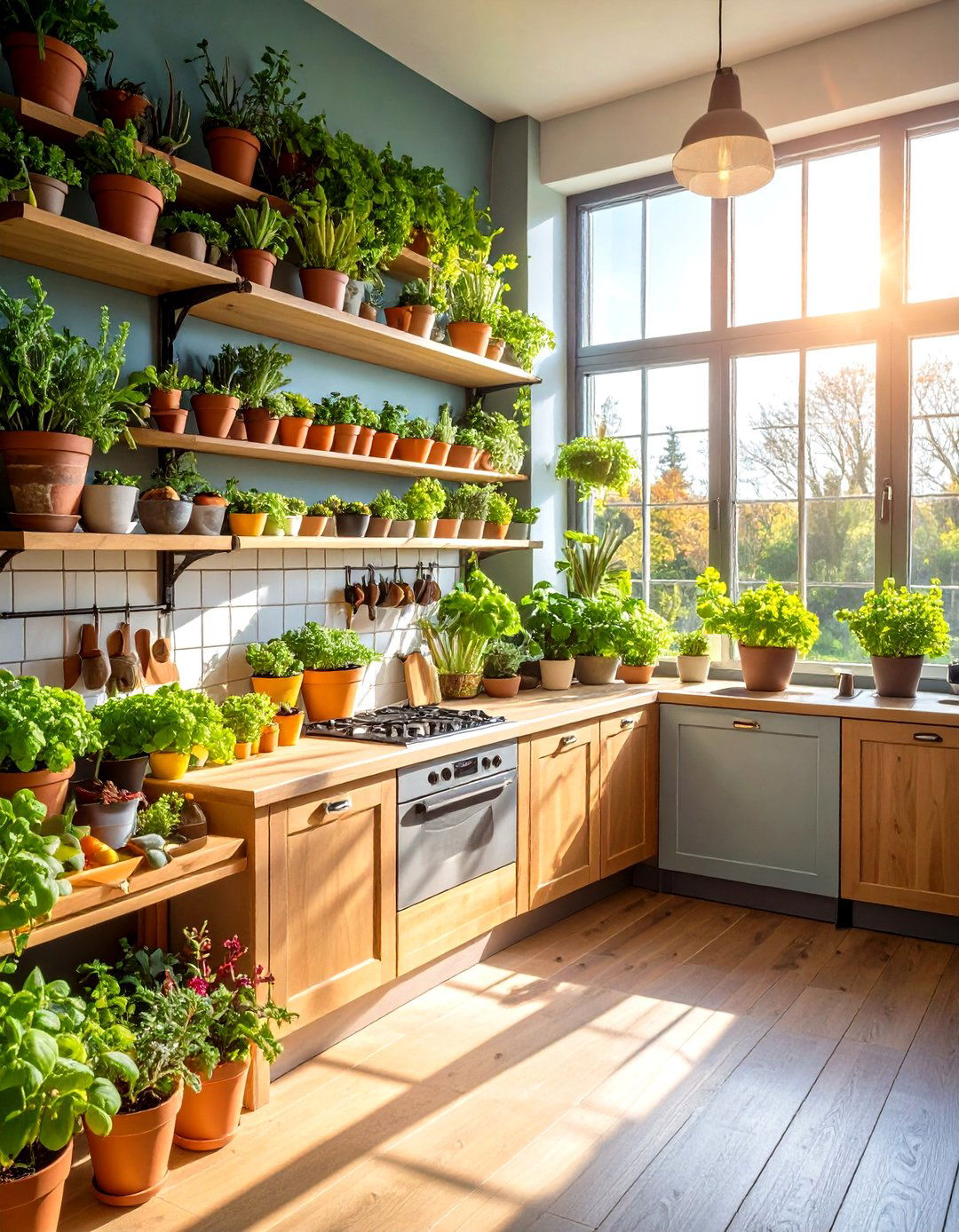
Sunrooms are natural havens for indoor plants; integrating a vertical herb garden or potted succulents near cooking zones brings fresh flavors to your kitchen and enhances air quality. Installing wall-mounted planters or a tiered plant stand by the windowsill maximizes sunlight exposure and adds a lush backdrop to meal preparation areas. Consider a self-watering system to simplify maintenance and keep foliage vibrant.
8. Statement Lighting Fixtures
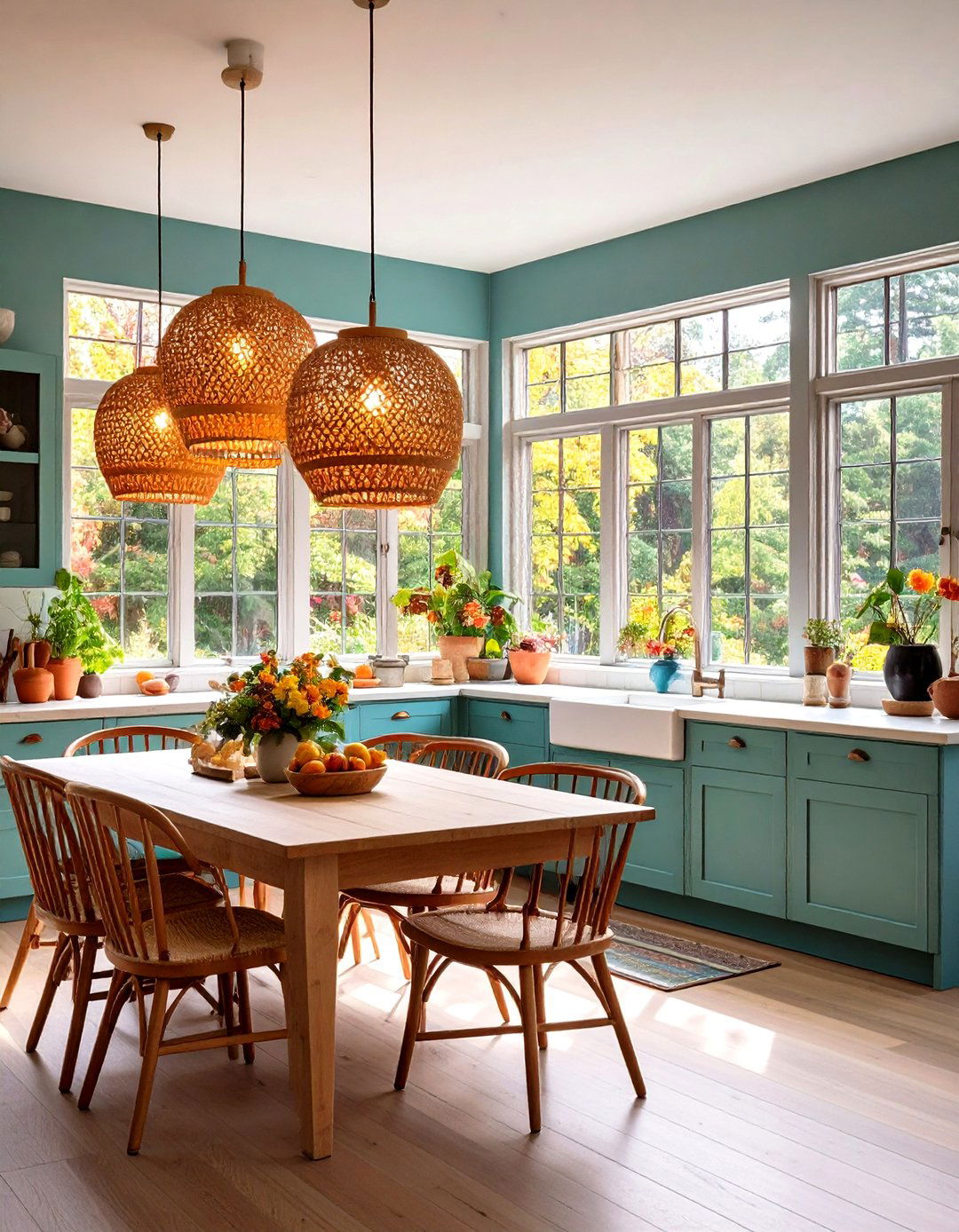
In a sunroom kitchen, lighting transitions from practical task illumination to decorative statements as dusk falls. Sculptural pendant lights over the island, a chandelier above the dining nook, or wall sconces flanking windows can define zones and introduce artistic flair. Materials like woven rattan or hand-blown glass reflect sunlight during the day and cast warm glows at night, accentuating the room’s textures.
9. Built-In Banquettes and Storage

Custom built-in banquettes not only offer comfortable seating but also conceal drawers or cabinet space beneath the bench, perfect for stashing table linens, board games, or seasonal decor. By integrating storage into seating, you minimize clutter and maintain the sunroom’s open atmosphere. Choose hinged bench tops for easy access and coordinate finishes with kitchen cabinetry for a seamless look.
10. Open Shelving Displays
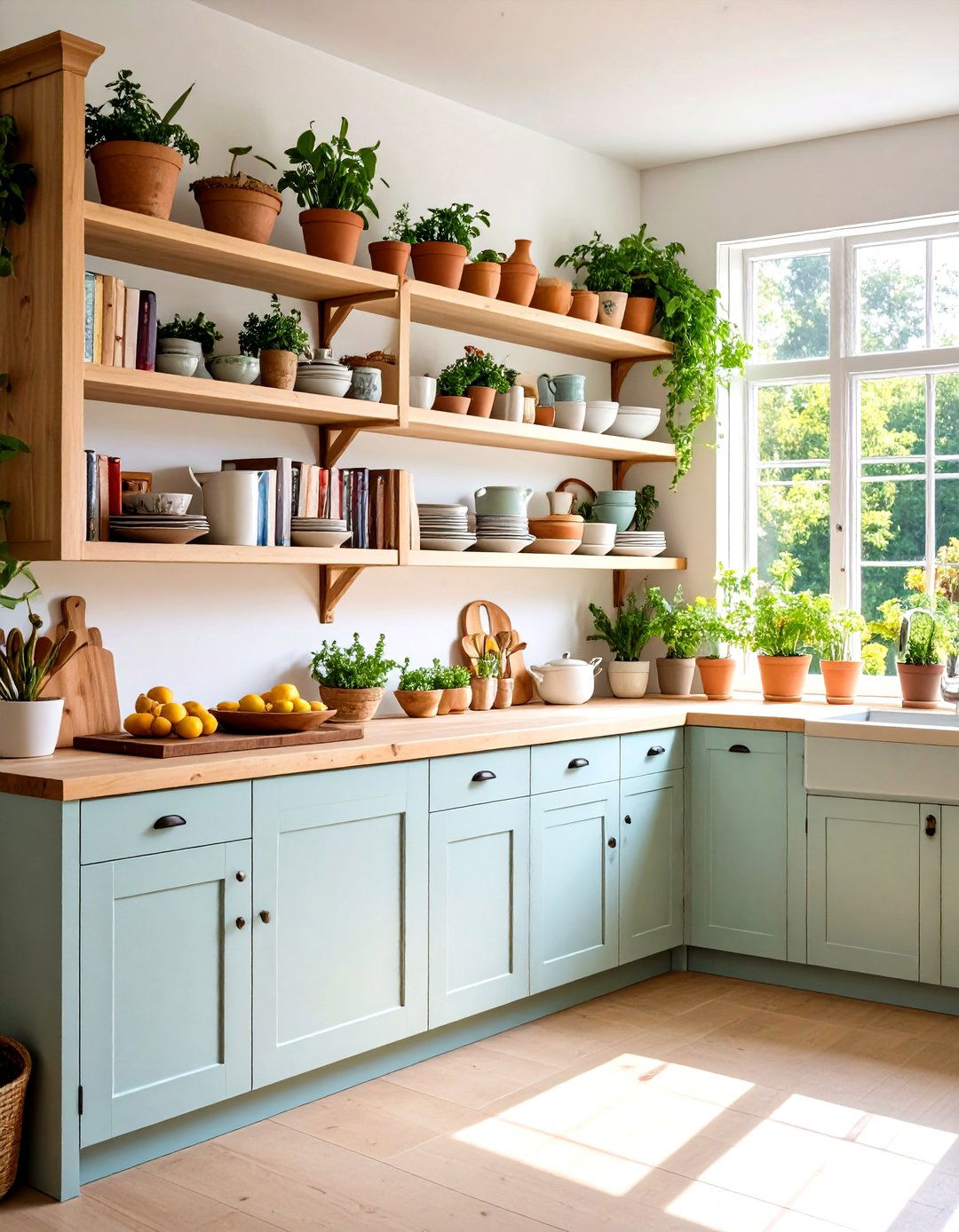
Replacing upper cabinets with open shelving in a sunroom kitchen allows decorative dishes, cookbooks, and potted herbs to become part of the room’s décor. Light-toned wood or metal-framed shelves keep the visual weight minimal, preserving the airy feel. To prevent dust buildup, arrange frequently used items on lower shelves and reserve higher shelves for decorative accents.
11. Skylights and Roof Lanterns
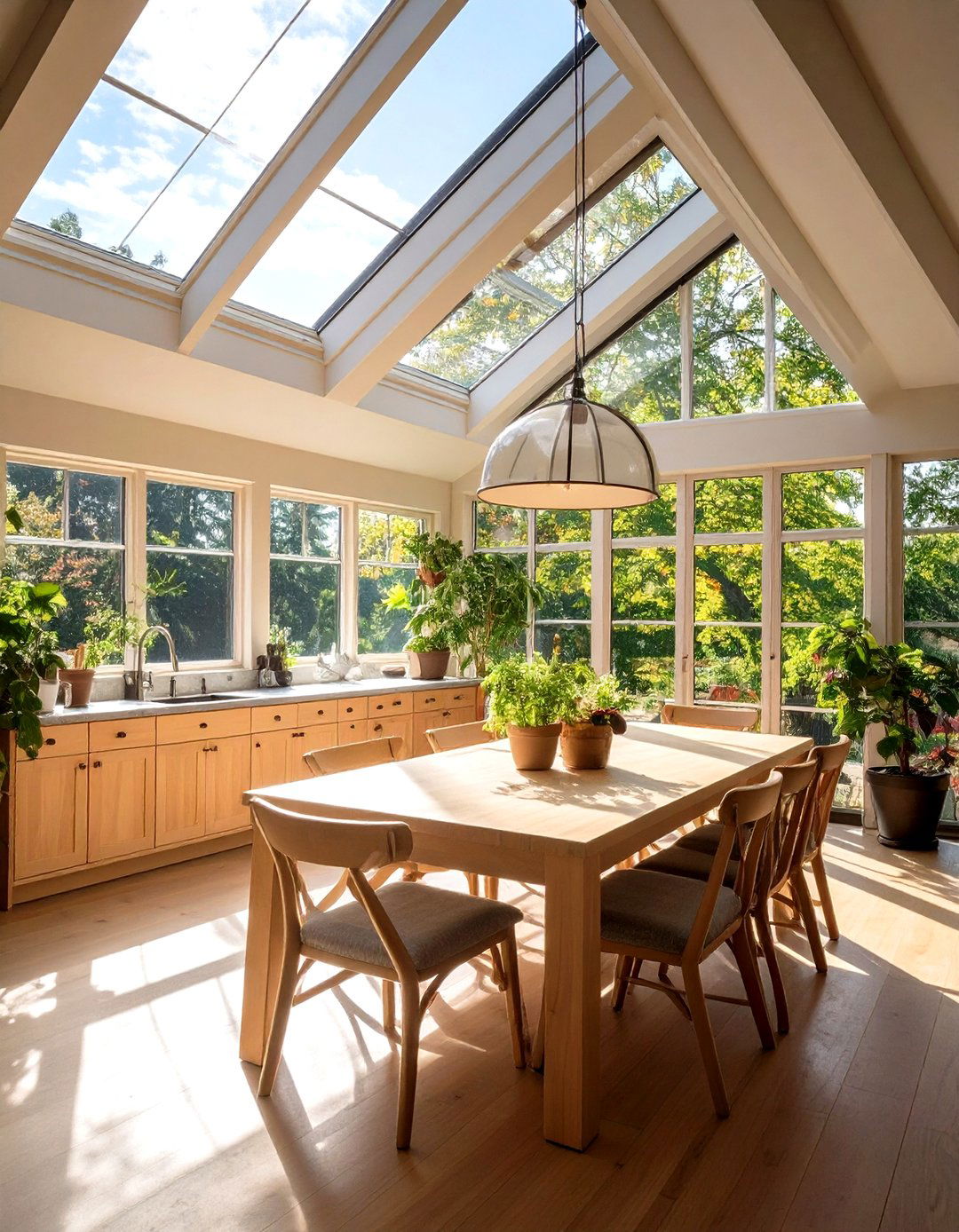
Adding skylights or a roof lantern amplifies overhead light and creates a dynamic play of sun and shadow throughout the day. Centered above the island or dining table, these features draw the eye upward and make the sunroom kitchen feel spacious and sculptural. Opt for energy-efficient glazing with UV protection to safeguard furnishings and ensure thermal comfort.
12. Bi-Fold or Pass-Through Windows
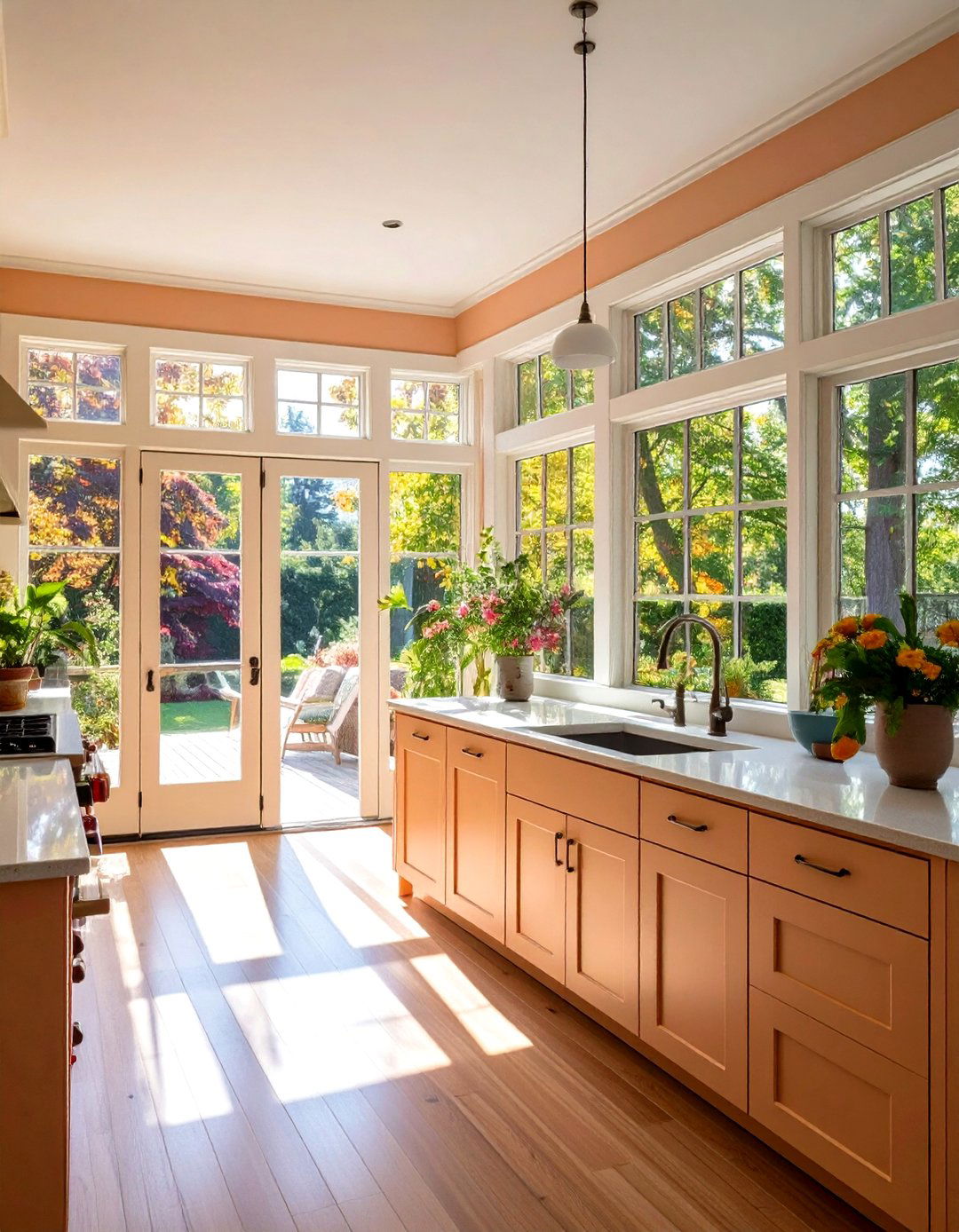
Bi-fold windows or a kitchen pass-through that opens to an adjacent patio or deck enhances serving efficiency and social interaction during gatherings. The open aperture acts like a bar, allowing guests to perch and chat with the cook while enjoying fresh air. When closed, the glass panes still preserve the connection to the outdoors and let light in.
13. Flooring That Bridges Spaces
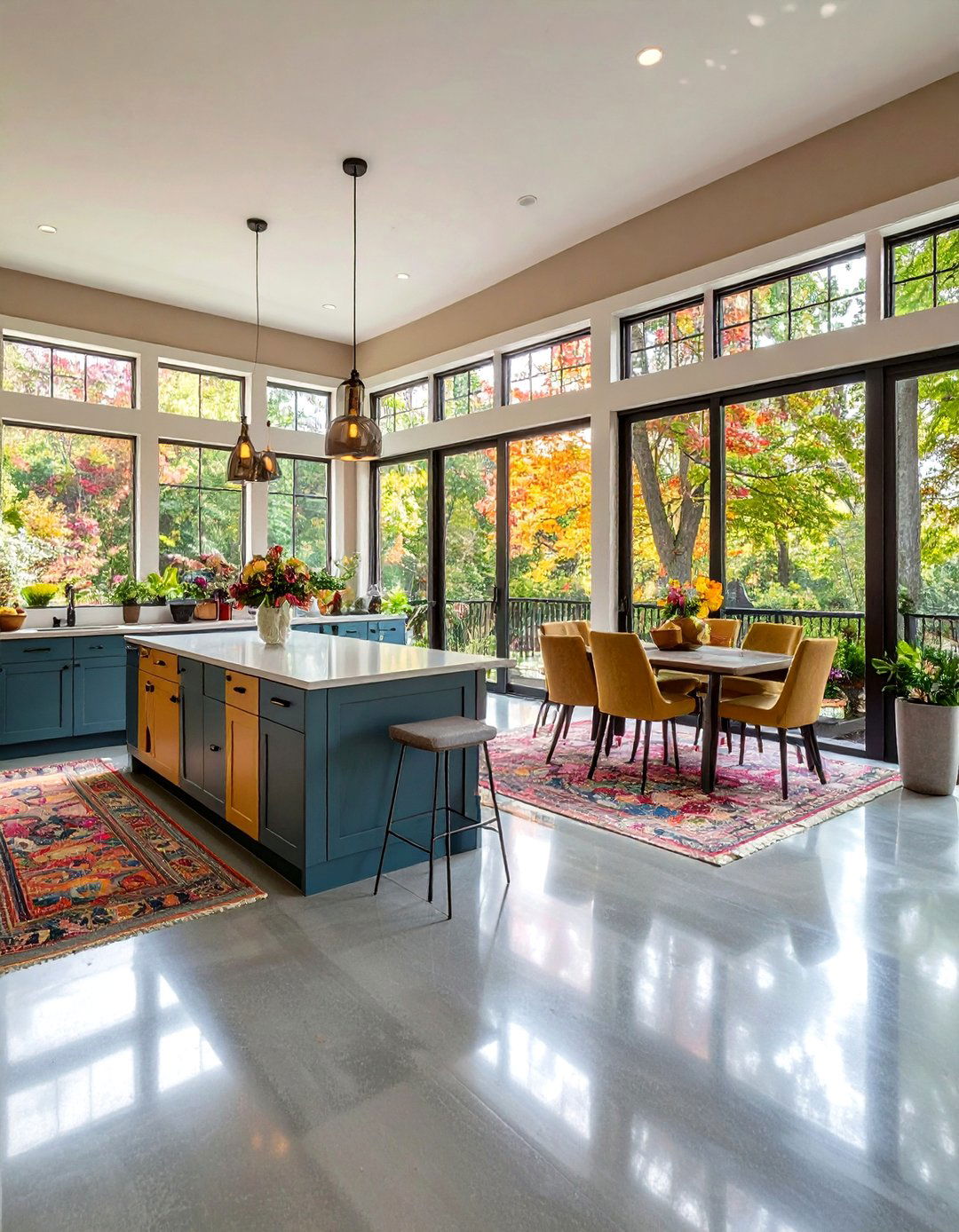
Choosing flooring that extends from the kitchen into the sunroom—such as polished concrete, porcelain tile, or engineered hardwood—unifies the two areas visually and functionally. Durable, low-maintenance materials that resist moisture ensure longevity in sunlit environments. To delineate zones subtly, consider area rugs in the dining nook or a contrasting grout color.
14. Coastal-Inspired Palette
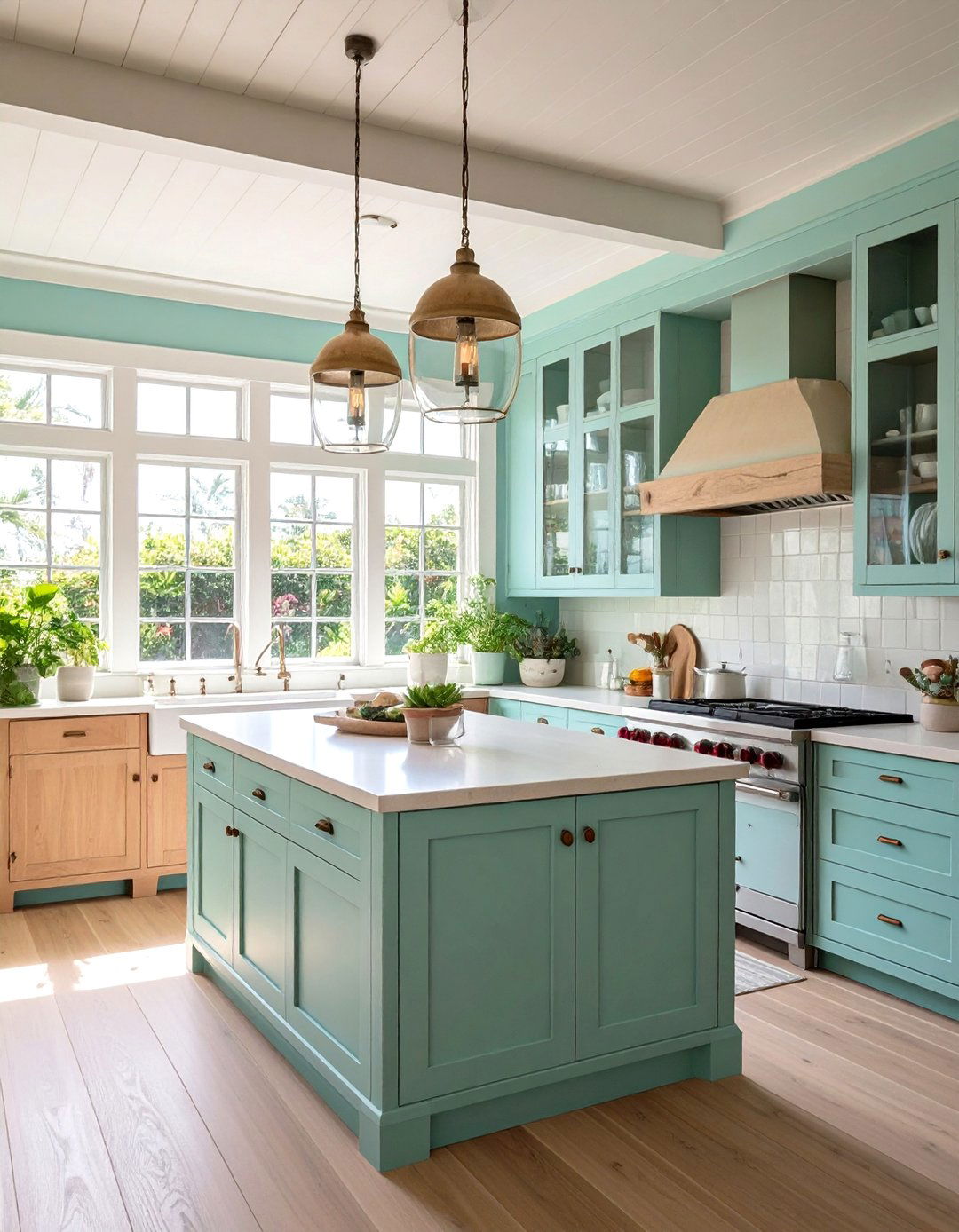
For a breezy, seaside vibe, incorporate soft aqua and sandy beige tones alongside crisp white cabinetry. Nautical accents—like rope pulls, driftwood shelves, or sea-glass pendant lights—enhance the coastal mood. This palette complements the natural sunlight of a sunroom kitchen, creating a tranquil retreat that feels vacation-ready year-round.
15. Rustic Farmhouse Charm
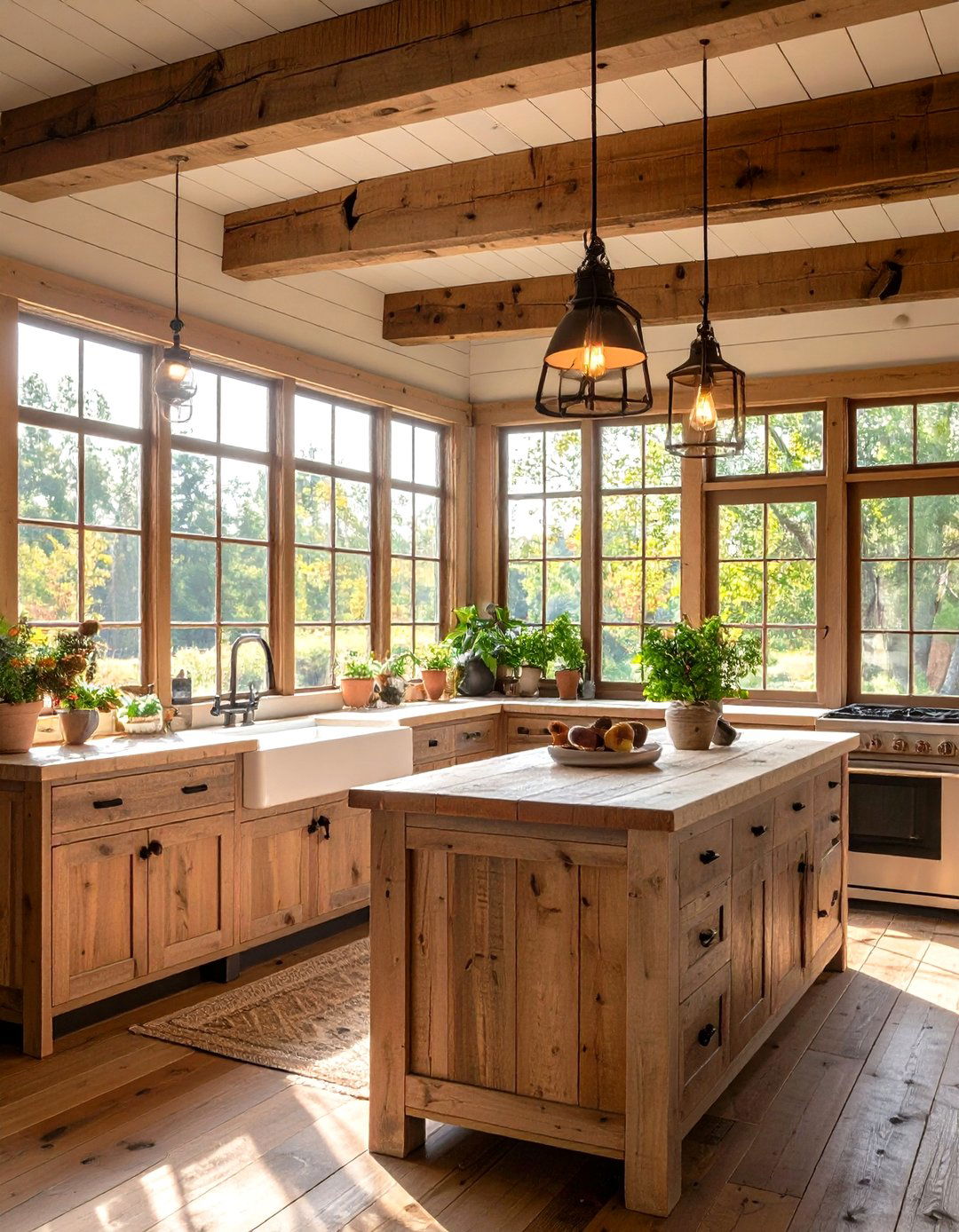
Blend farmhouse elements—such as shiplap walls, apron-front sinks, and distressed wood countertops—into your sunroom kitchen for a cozy, lived-in ambiance. Pair these with industrial-style pendant lights and metal barstools to balance the rustic aesthetic. The contrast between rough-hewn textures and sleek appliances brings warmth and character to the bright setting.
16. Minimalist Modern Design
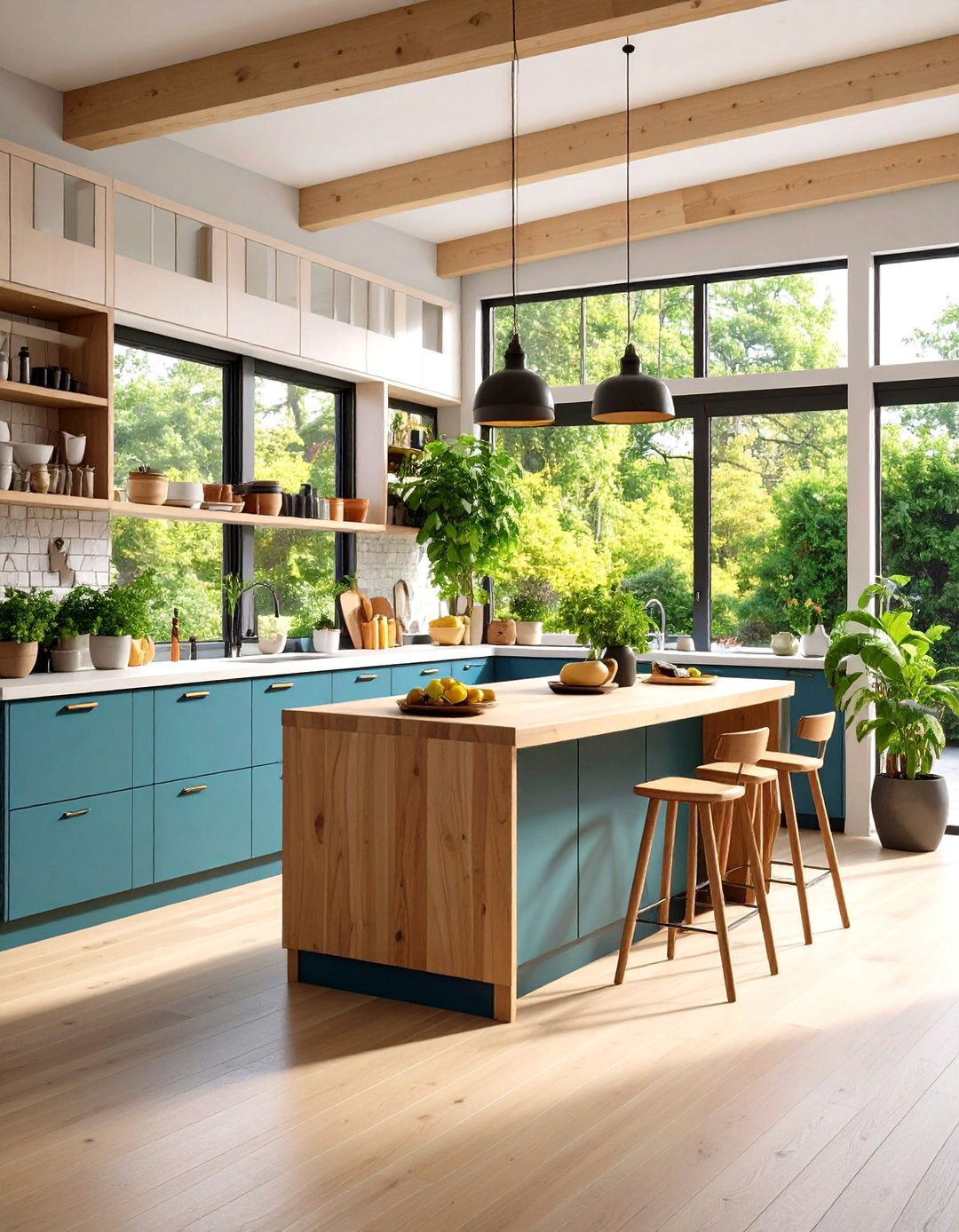
For a streamlined sunroom kitchen, favor handleless cabinetry, integrated appliances, and a monochromatic color scheme. Floor-to-ceiling windows and concealed storage maintain a clutter-free environment that feels both functional and serene. Use discreet under-cabinet lighting to highlight countertops without detracting from the minimalist aesthetic.
17. Bold Accent Walls

Introducing a bold accent wall—whether with patterned wallpaper, colorful tile, or a statement color—anchors one side of the sunroom kitchen and adds visual interest. A green botanical print wall behind open shelves can complement the outdoor vista, while geometric backsplash tiles around the cooking area inject energy and focus.
18. Smart Appliance Integration
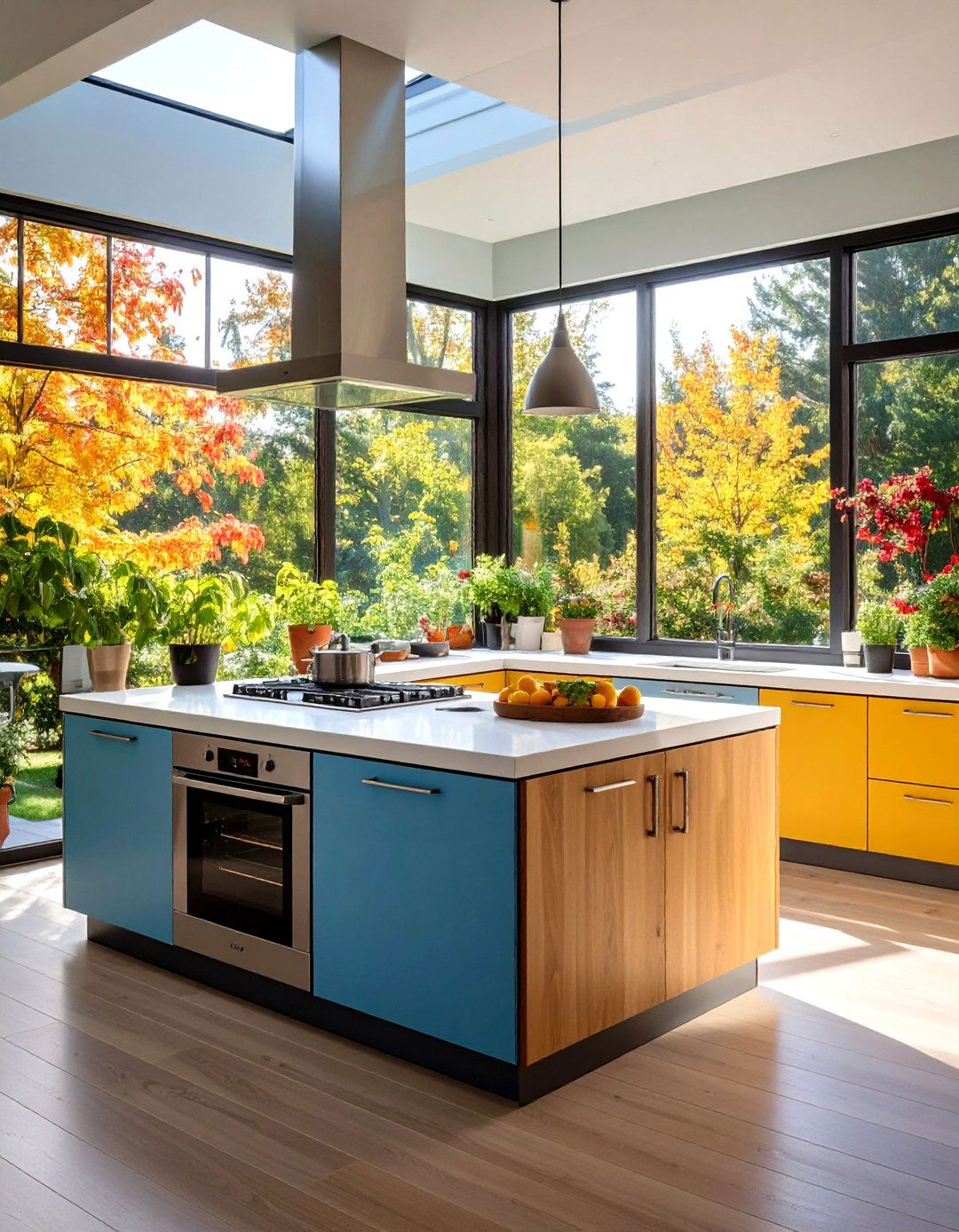
Conceal modern appliances—like refrigerators, dishwashers, and microwaves—behind cabinetry panels for a cohesive look, or choose sleek built-in models with stainless finishes for an industrial edge. Integrating a compact beverage cooler into the island and installing a pop-up power station on the countertop enhances convenience without sacrificing style.
19. Sustainable and Eco-Friendly Choices
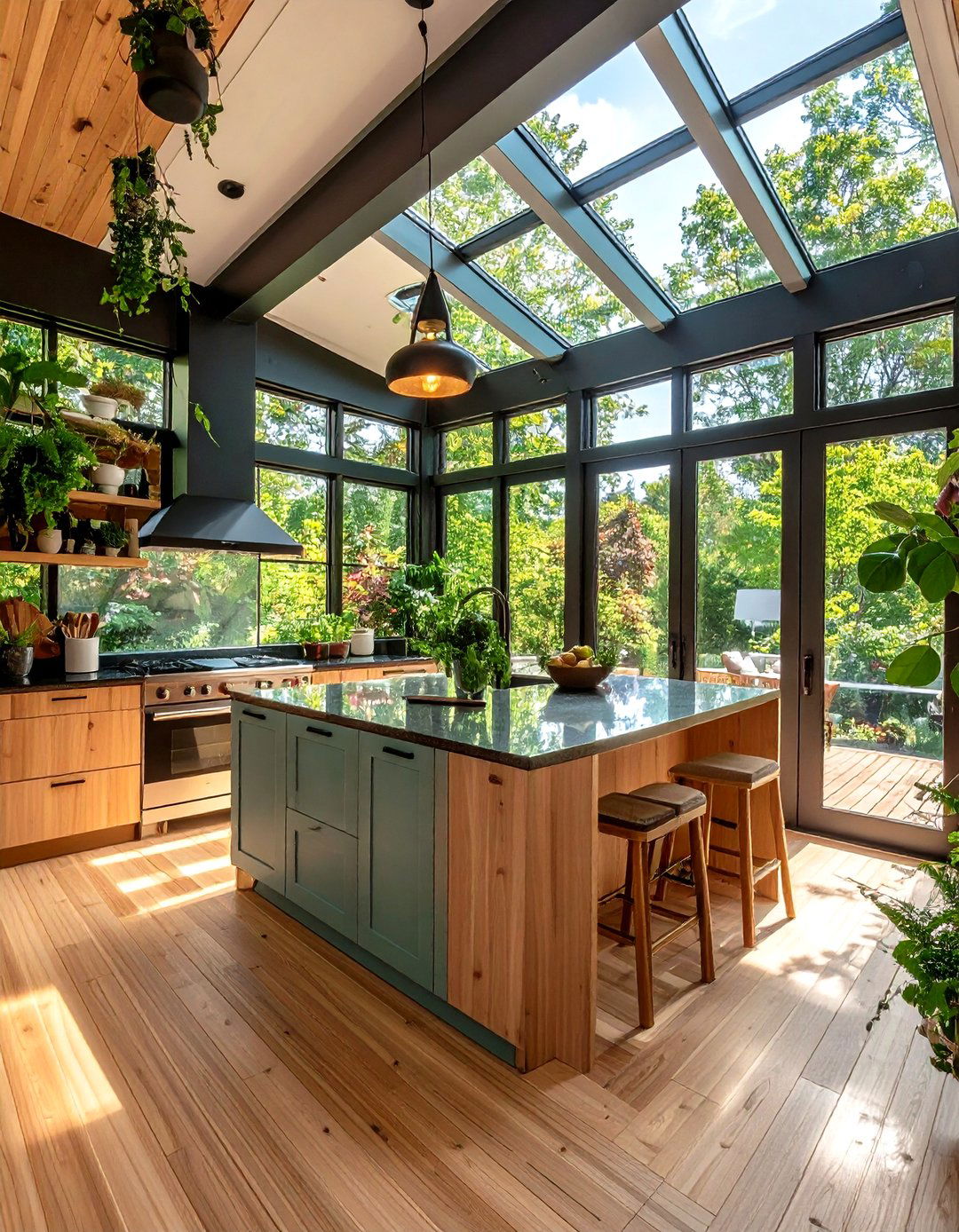
Incorporate eco-friendly materials—such as bamboo flooring, recycled glass countertops, and low-VOC paints—to create a sunroom kitchen that’s both healthy and sustainable. Energy-efficient LED lighting and ENERGY STAR–rated appliances reduce utility costs, while solar-shade fabrics minimize heat gain, supporting a greener home footprint.
20. Personal Touches and Décor
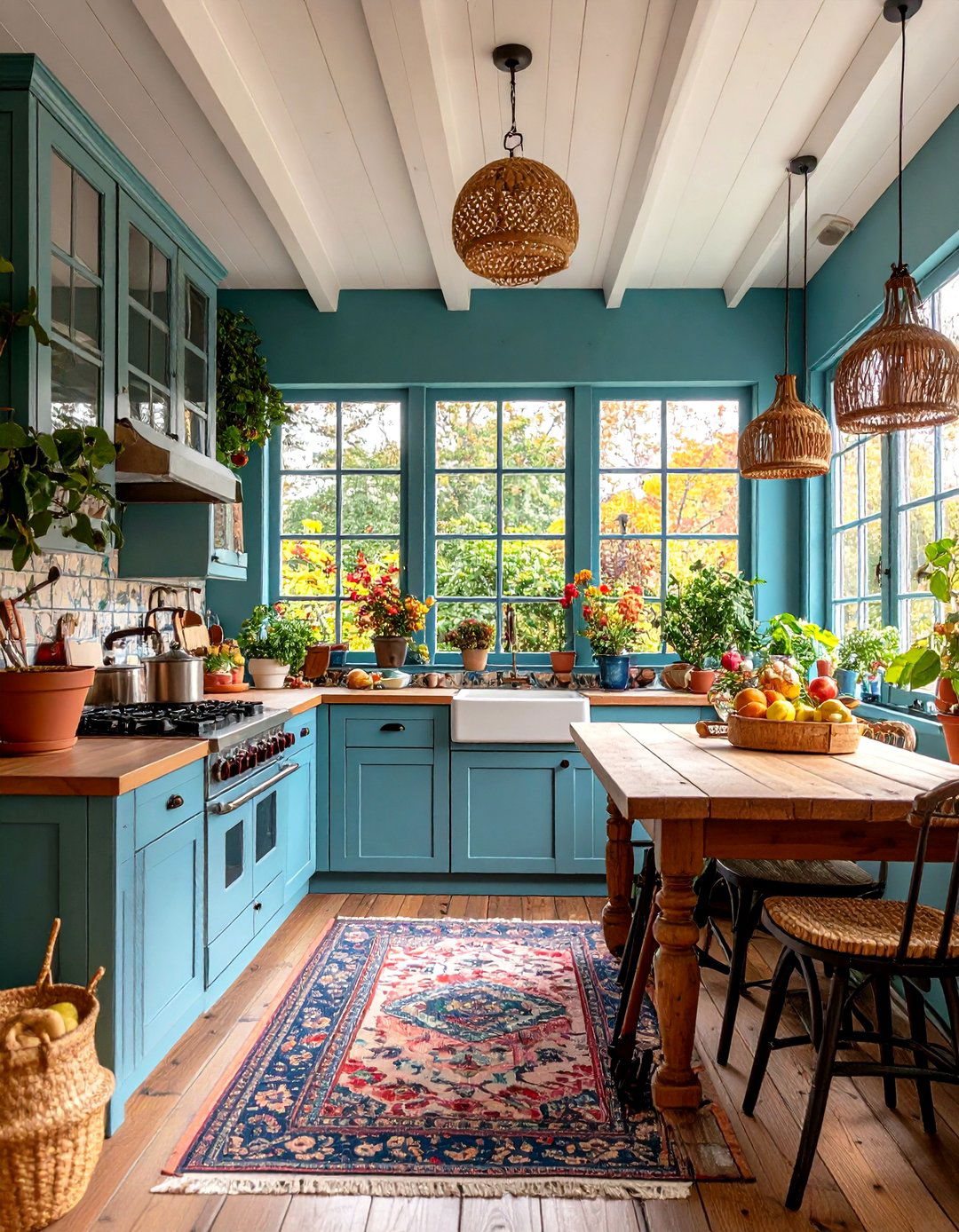
Finally, infuse your sunroom kitchen with personal decor elements: framed botanical prints, handcrafted ceramics, or a vintage rug under the dining area. Rotating seasonal decor—like fresh flowers in spring or woven pumpkins in autumn—keeps the space feeling vibrant and curated. These small touches ensure your sunroom kitchen reflects your unique style and lifestyle needs.
Conclusion:
Sunroom kitchen designs offer an inspiring fusion of natural light, functional cooking space, and indoor–outdoor living. By focusing on seamless flow, strategic material choices, and personalized accents, you can craft a space that serves as both a culinary hub and a serene retreat. Whether your preference leans toward modern minimalism, rustic charm, or coastal bliss, integrating abundant greenery, statement lighting, and thoughtful storage makes your sunroom kitchen a standout feature in your home—one where daily routines and special gatherings alike are infused with warmth and brightness.


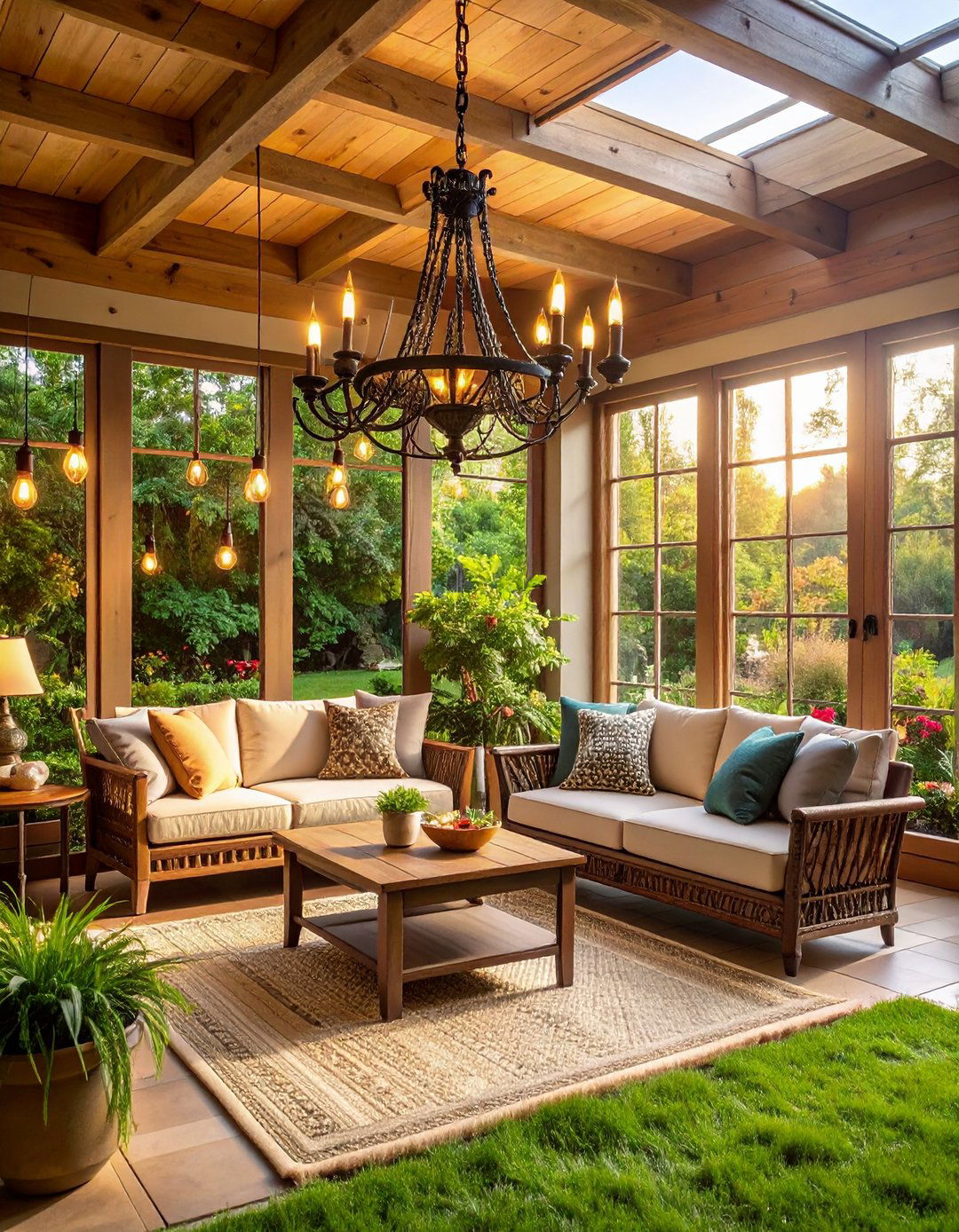

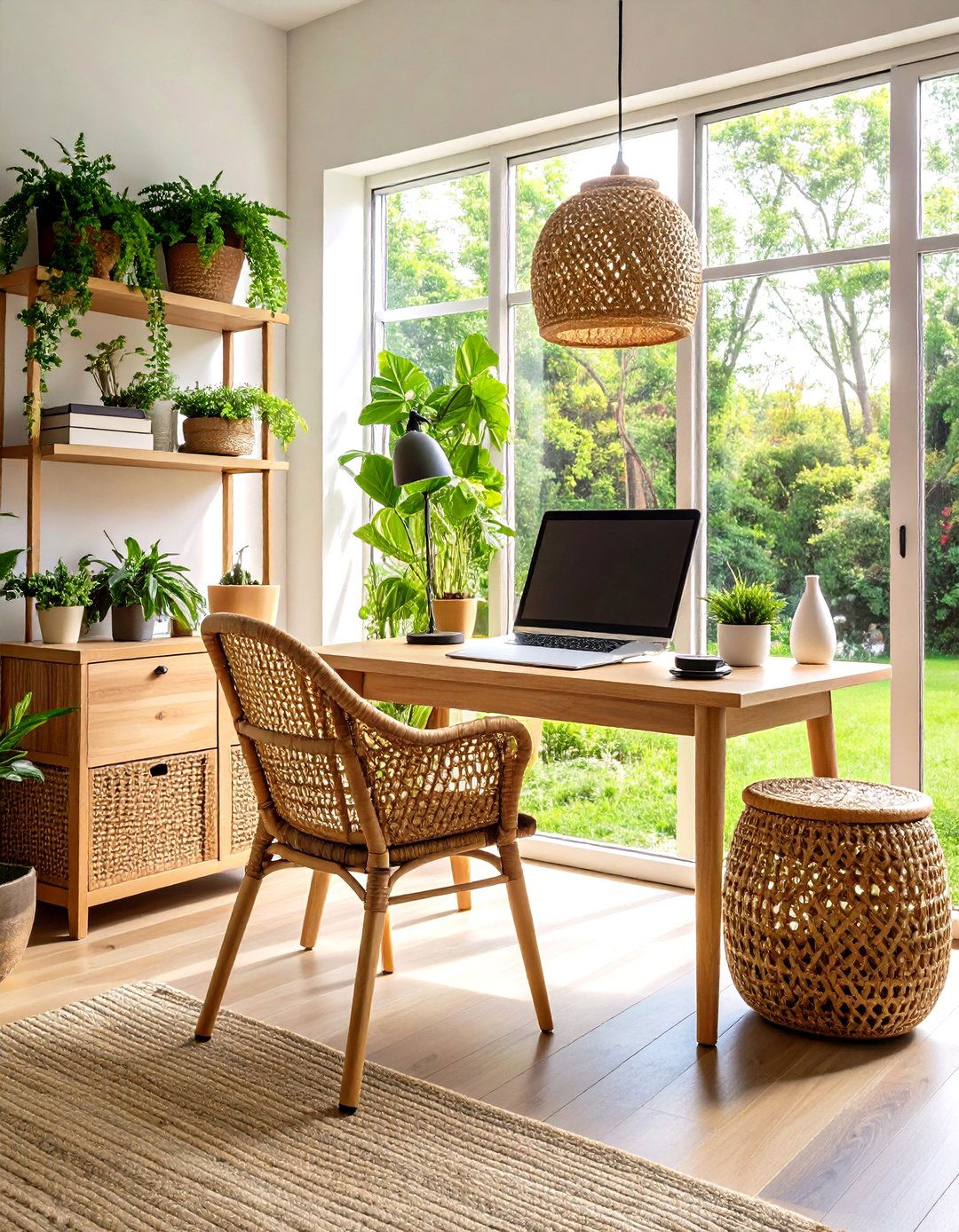
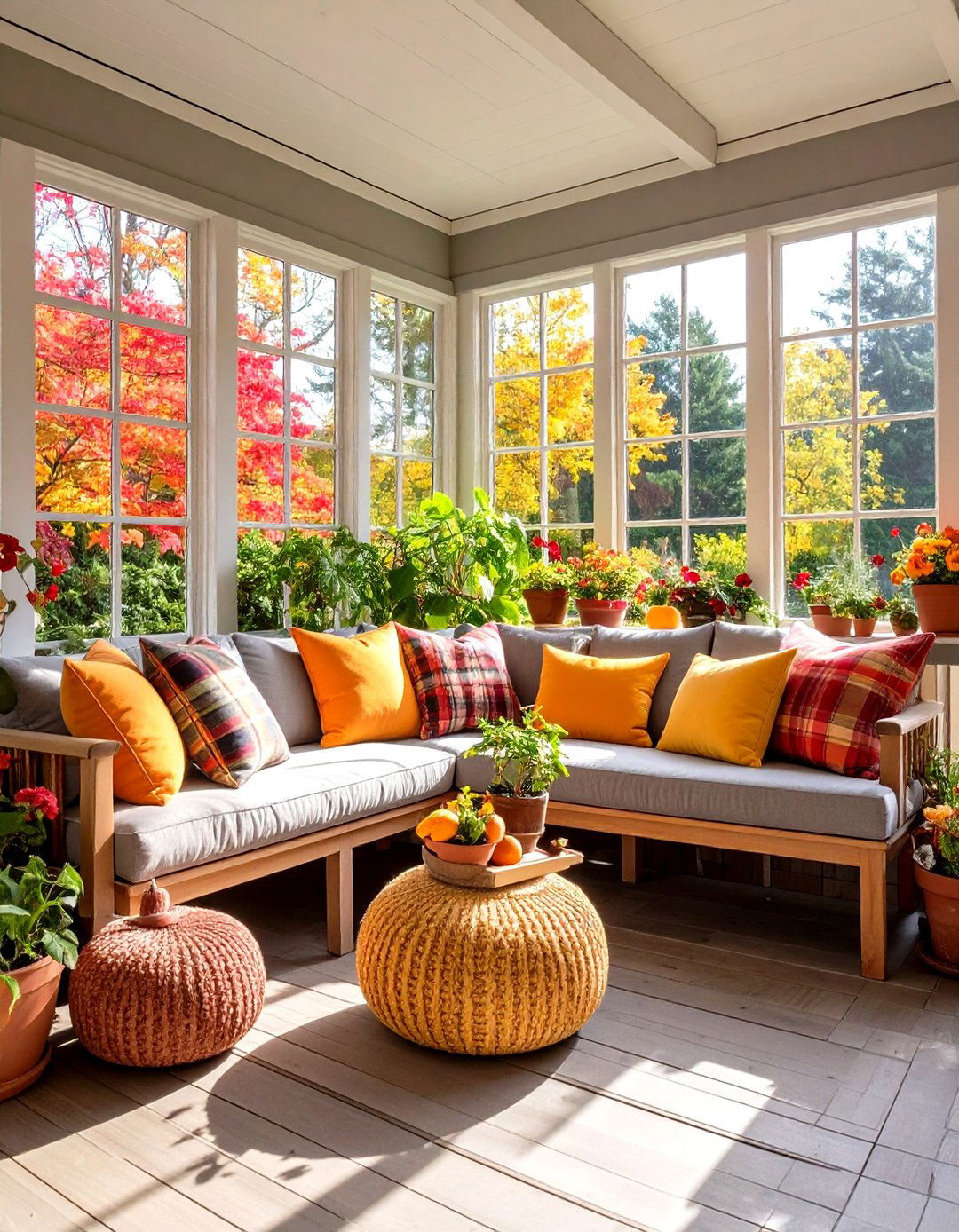
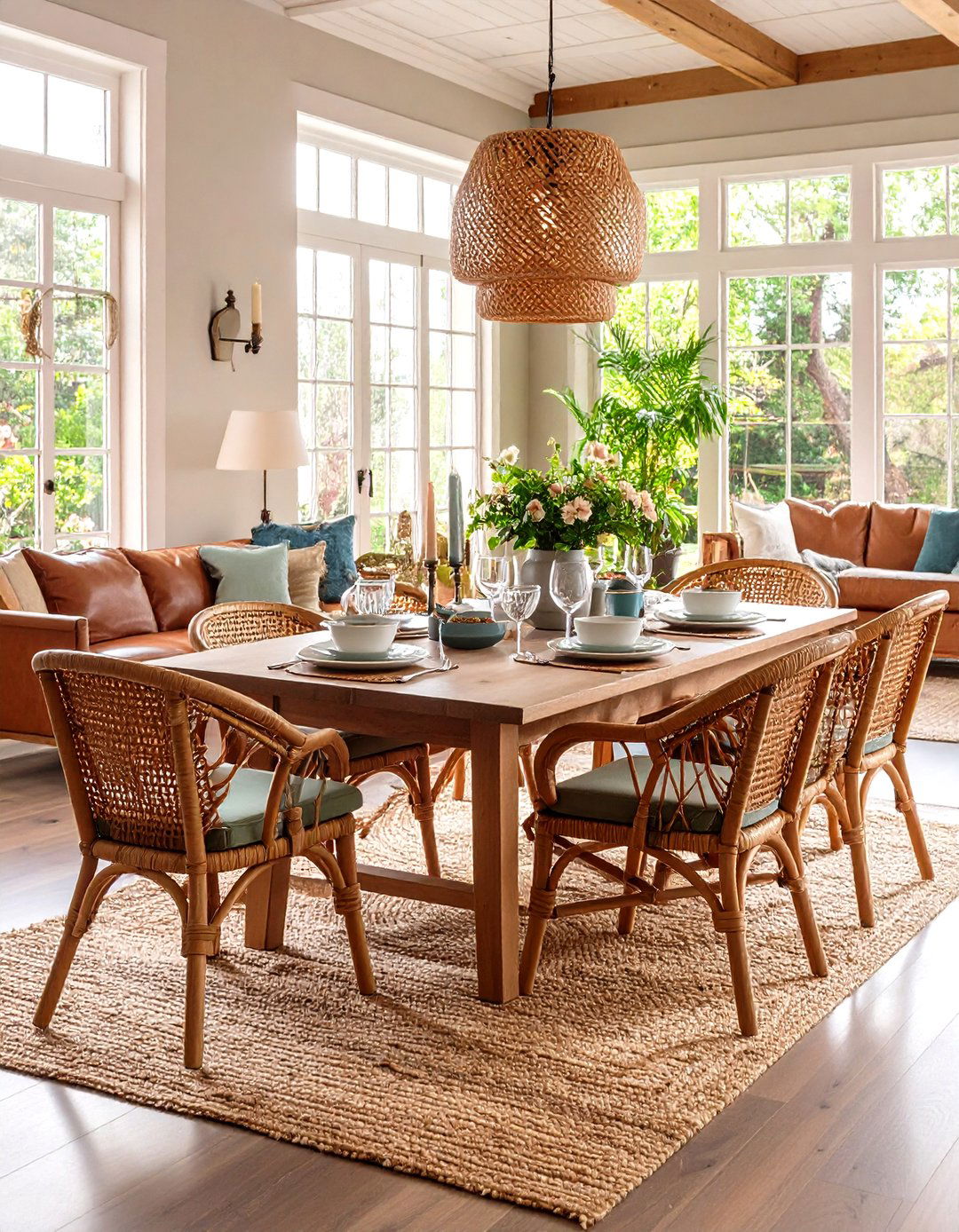
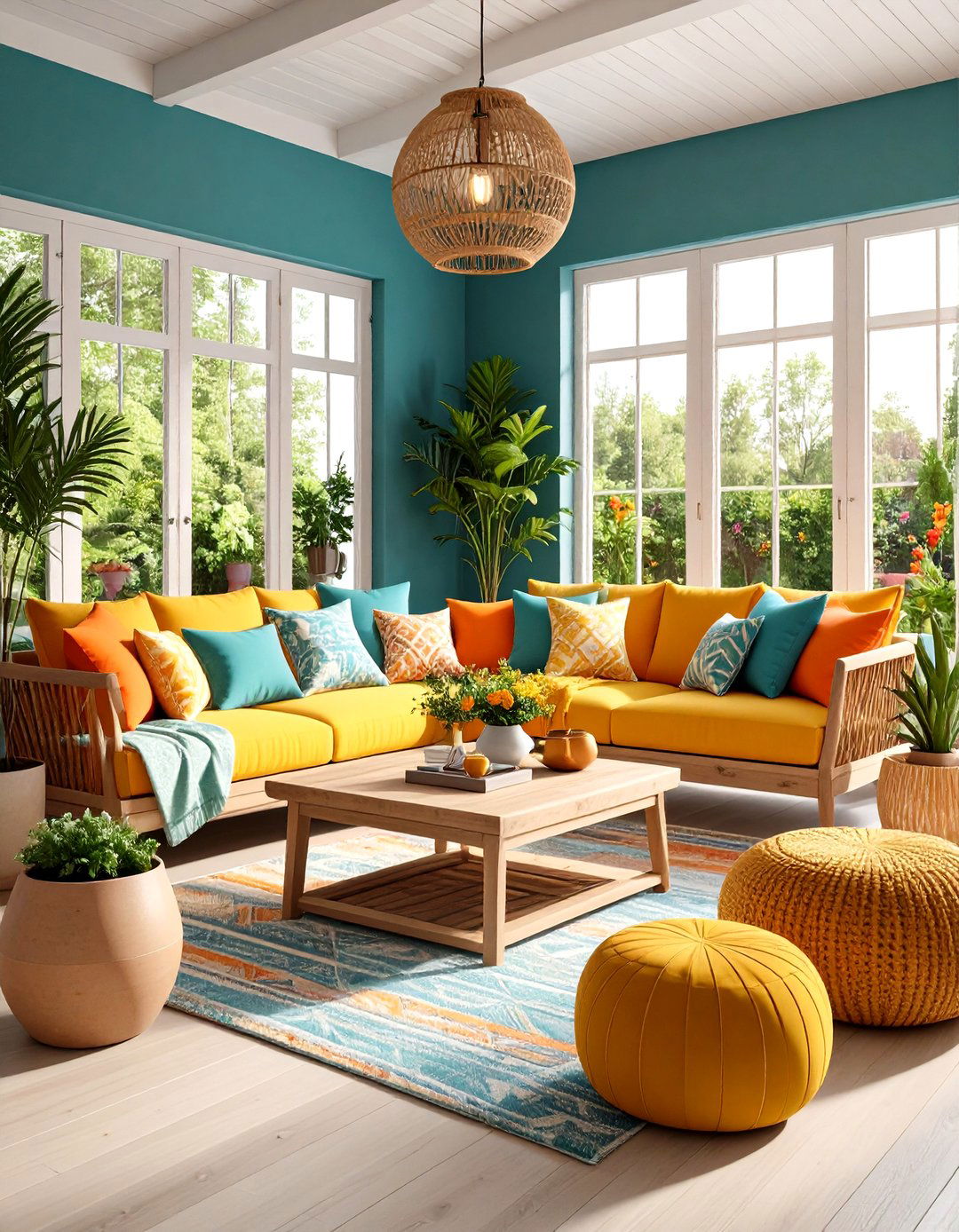
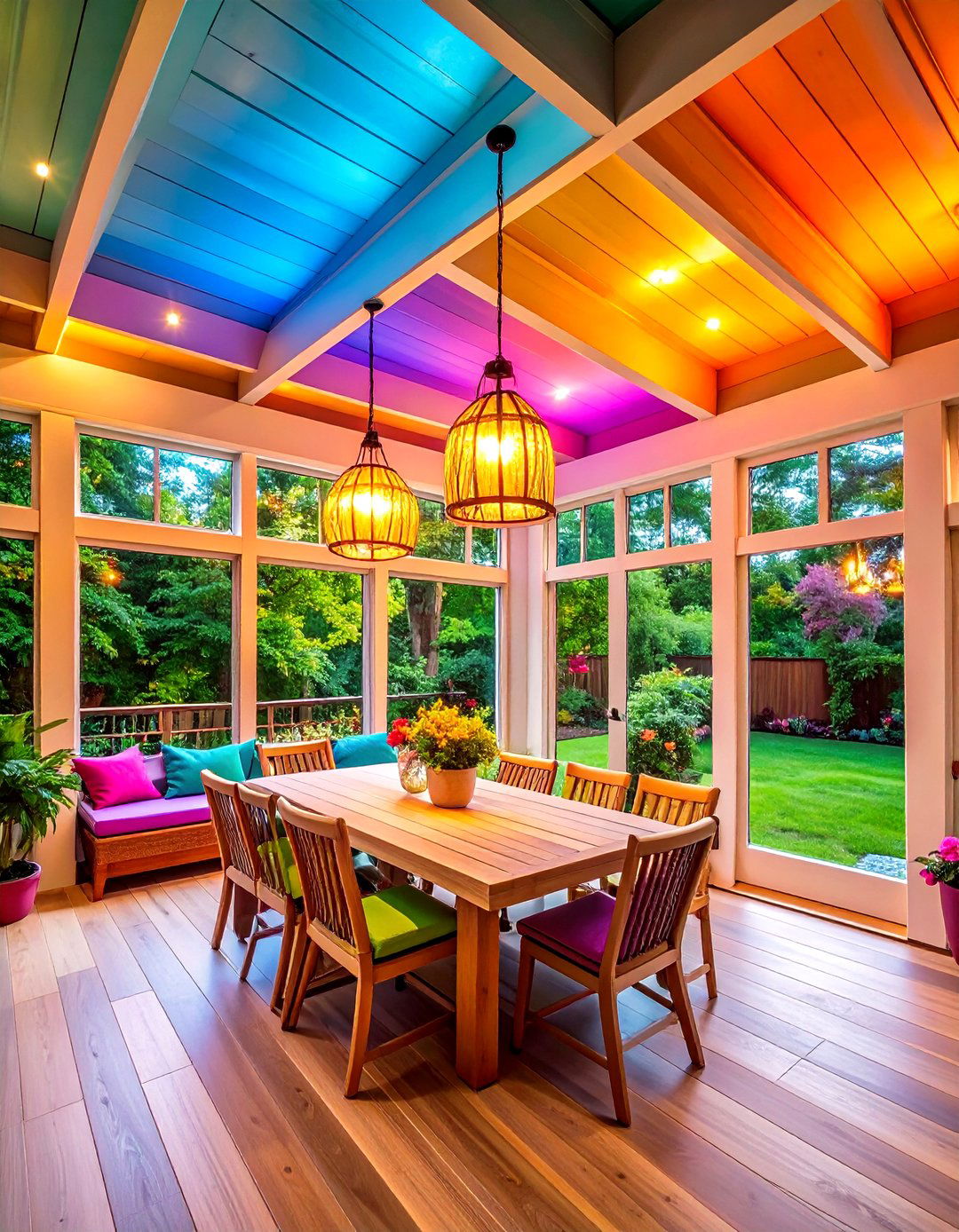
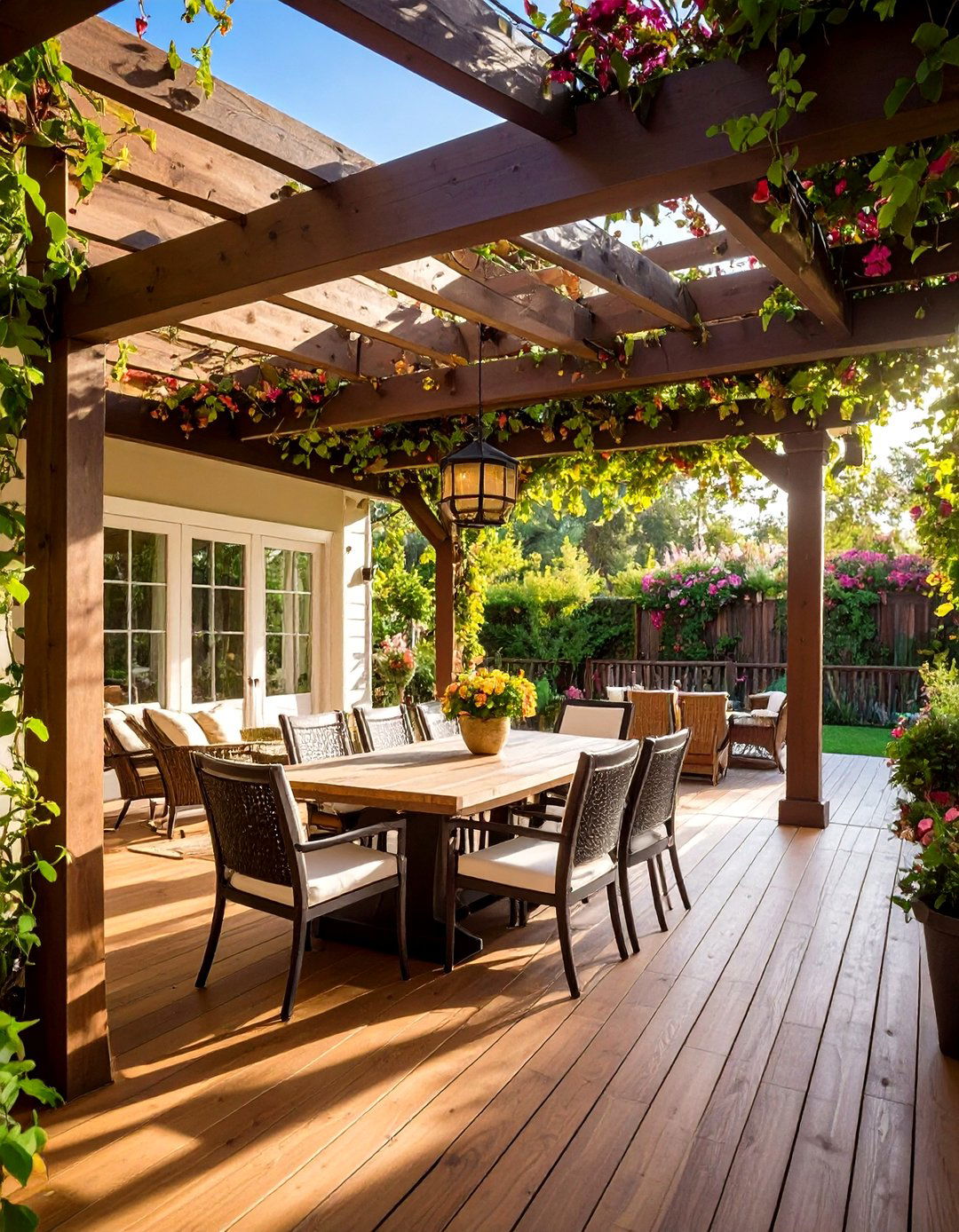
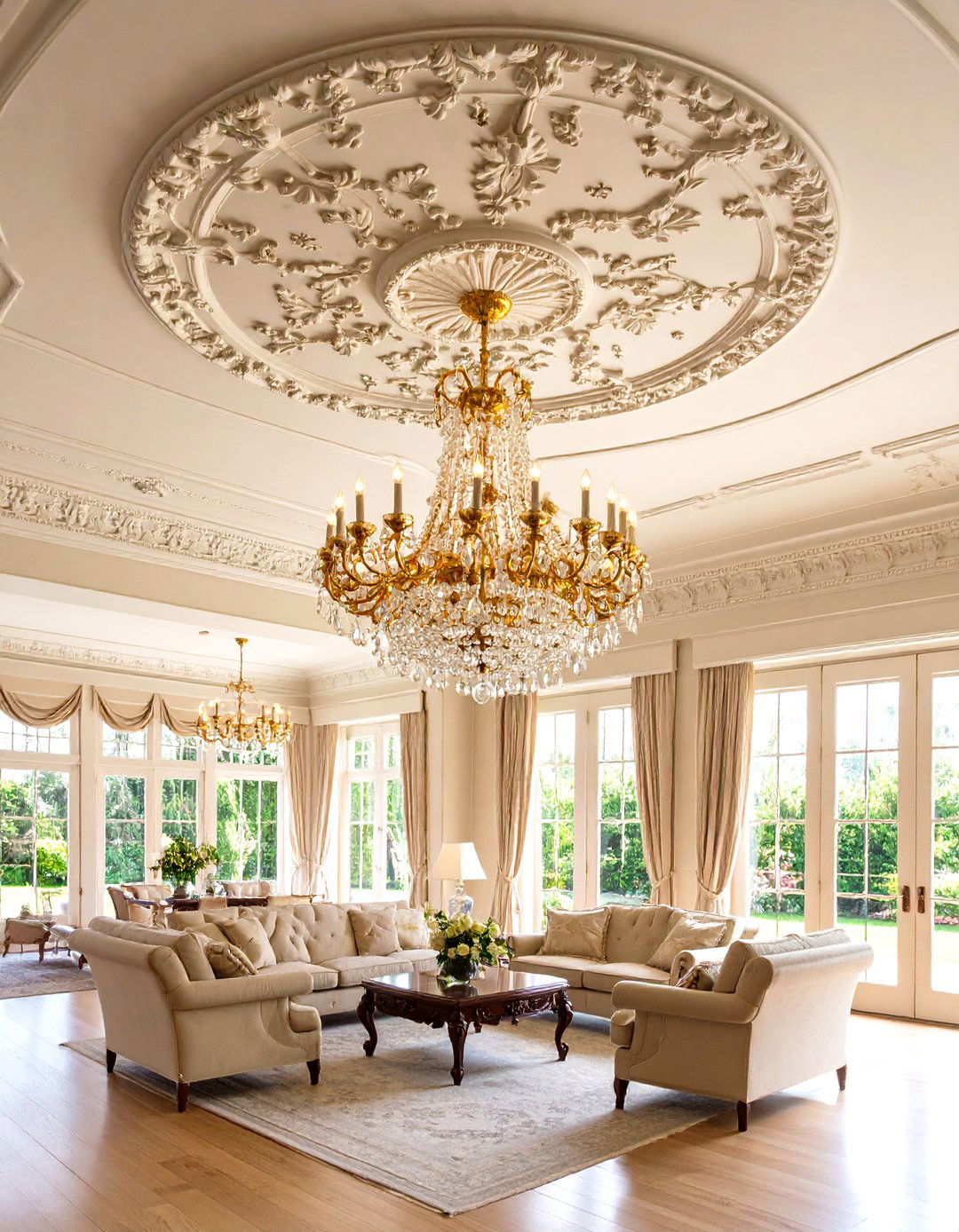

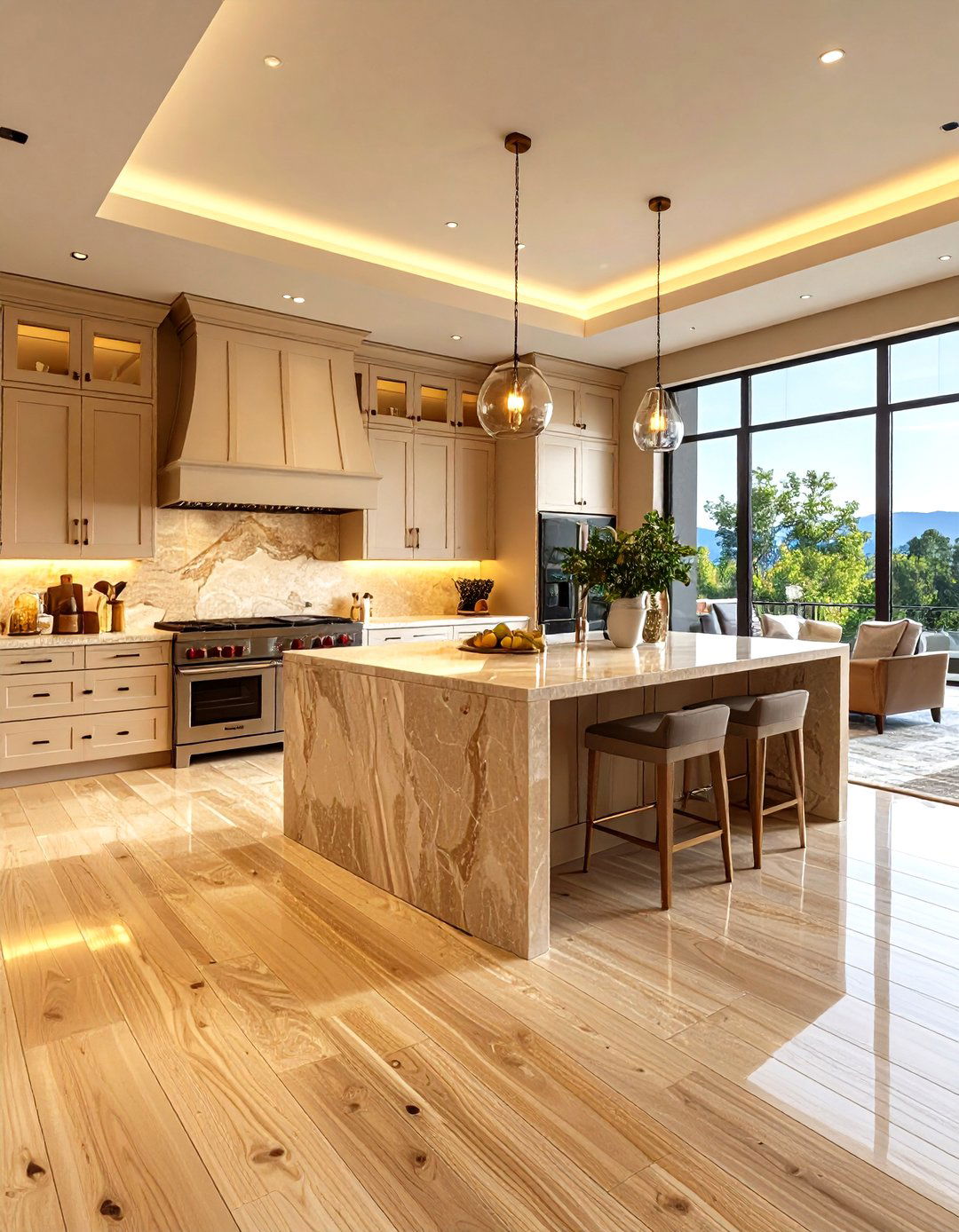
Leave a Reply